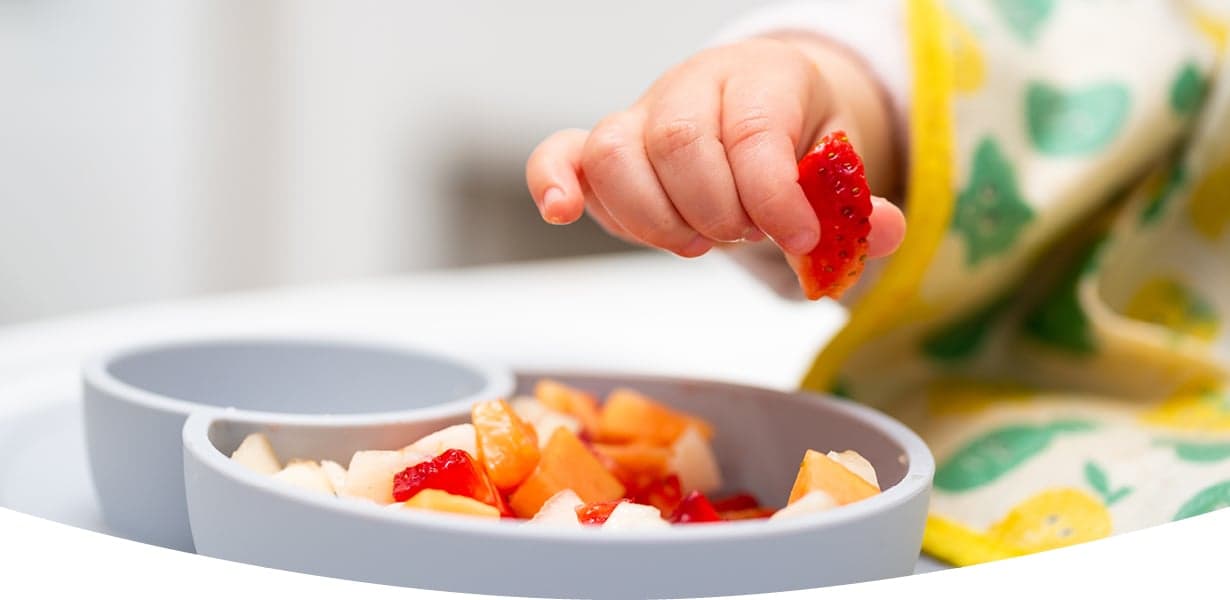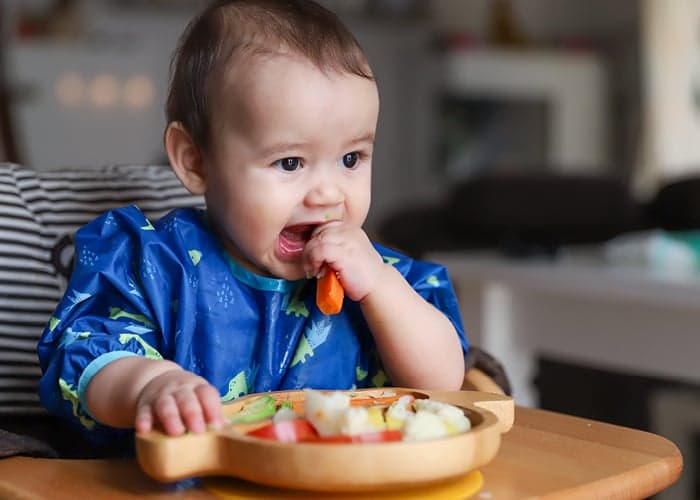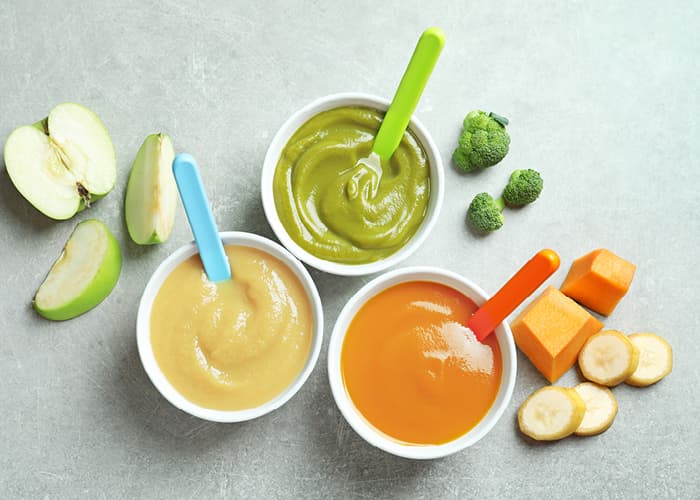
Introducing Chunky Foods into the Baby's Diet
One of the biggest fears of parents regarding complementary feeding is the risk of choking. Many worry that introducing solid foods is too early for the baby, so they wait until 9-10 months to try. However, mastering the process of chewing and swallowing is a time- and energy-consuming task that cannot be skipped. That's why it's not worth delaying for too long.
SPOILER ALERT! No matter when you start, until the child masters independent eating, you will wash hundreds of children's clothes, swallow your tears dozens of times at the sight of the dubious texture and color mess covering the entire house, and you will surely laugh a lot. Eating is an adventure, a joy, and health. Approach it this way too!

Why is it important for children to get acquainted with solid foods as soon as possible?
Solid foods introduce your baby to various textures, allowing them to experience more of the world. The splashing, touching, and placing food in the mouth by hand enable the development of hand-eye coordination and ultimately their nervous system.
Since babies can perform the process of mashing-chewing without teeth, even with their gums, there is no need to wait until the first teeth appear! If the little one can already sit, it's time to start, as learning the complete and error-free process can take months. Believe me, avoiding solid foods is not the solution to prevent choking hazards, but acquiring knowledge as soon as possible is.
3 basic rules for introducing solid foods
When introducing solid foods, it is worth following a few simple rules, even if they cause at least some inconvenience for parents.
1. The first and most important rule is never to leave your child alone while eating! Your constant presence ensures that nothing bad happens.
2. Learn to distinguish between gagging and choking! Choking occurs when, after taking a breath, before swallowing, the epiglottis does not close completely. In this case, the swallowed bite goes 'astray,' meaning it ends up at the upper entrance of the esophagus. If this happens, babies instinctively try to cough up the bite that obstructs breathing.
Gagging, on the other hand, is completely normal and necessary, an instinctive reaction that only occurs when the bite reaches the back third of the oral cavity. With this reflex, children's brains prevent the need for choking later on. Therefore, it is very important that no matter how frightening the sight may be, remain calm and confident instead of scaring your baby!
3. Do not hide pieces in the puree! It is most likely that something unexpected will happen during a meal if the mother tries to be sneaky. What do I mean? When you mix small pieces into the pureed food, but they are initially invisible, the little one prepares for puree and uses the knowledge known for consuming puree. However, their reaction to unexpected pieces can range from spitting to choking. If you give your baby solid food, it should be visible that this time the little one will deal with pieces!

Introducing Chunky Foods Step by Step
Alright, but how do we get from purees to the point where the little one eats the same way as the rest of the family? The answer is simple: time, time, time, and a little practice.
Step 1: Involve the baby in family meals! Are you one of those moms who focuses on the little one's needs all day and grabs a few bites on the run? Enough of that! Make mealtimes special, seat your baby at the table, and let them observe what and how you eat! Babies often develop through imitation, and it's no different with meals.
Step 2: Let them try eating on their own! Most moms aren't thrilled with the idea of cleaning 24/7, but it's worth letting the little ones make a mess. Allow them to try with purees, making the transition to chunky foods easier!
Step 3: Dive in! You can start introducing chunky pureed foods anytime after the baby is 6 months old, can sit independently, and is good at eating purees. Simultaneously, you can try extruded cereal sticks, as they almost melt in the mouth. (However, it's advisable to avoid balls, especially in the early stages, as they are harder and smaller than sticks.)
Step 4: Bring on the food pieces! You don't have to wait for the first teeth to appear: you can already try steamed, cooked, or baked vegetable and fruit pieces that are easy to mash. How do you know if the offered piece is soft enough? If you can easily mash them with two fingers, the baby's gums will be able to do the same.
Step 5: Shared meals. If the baby is already doing well with fruit slices, potato wedges, peas, and bread cubes, there's no need to wait; it's time to share a dish! (Of course, only while adhering to complementary feeding recommendations.)
It cannot be stressed enough that this process should not be rushed! It's also important for parents to see opportunities rather than dangers around them and to enjoy the joy of shared meals.

